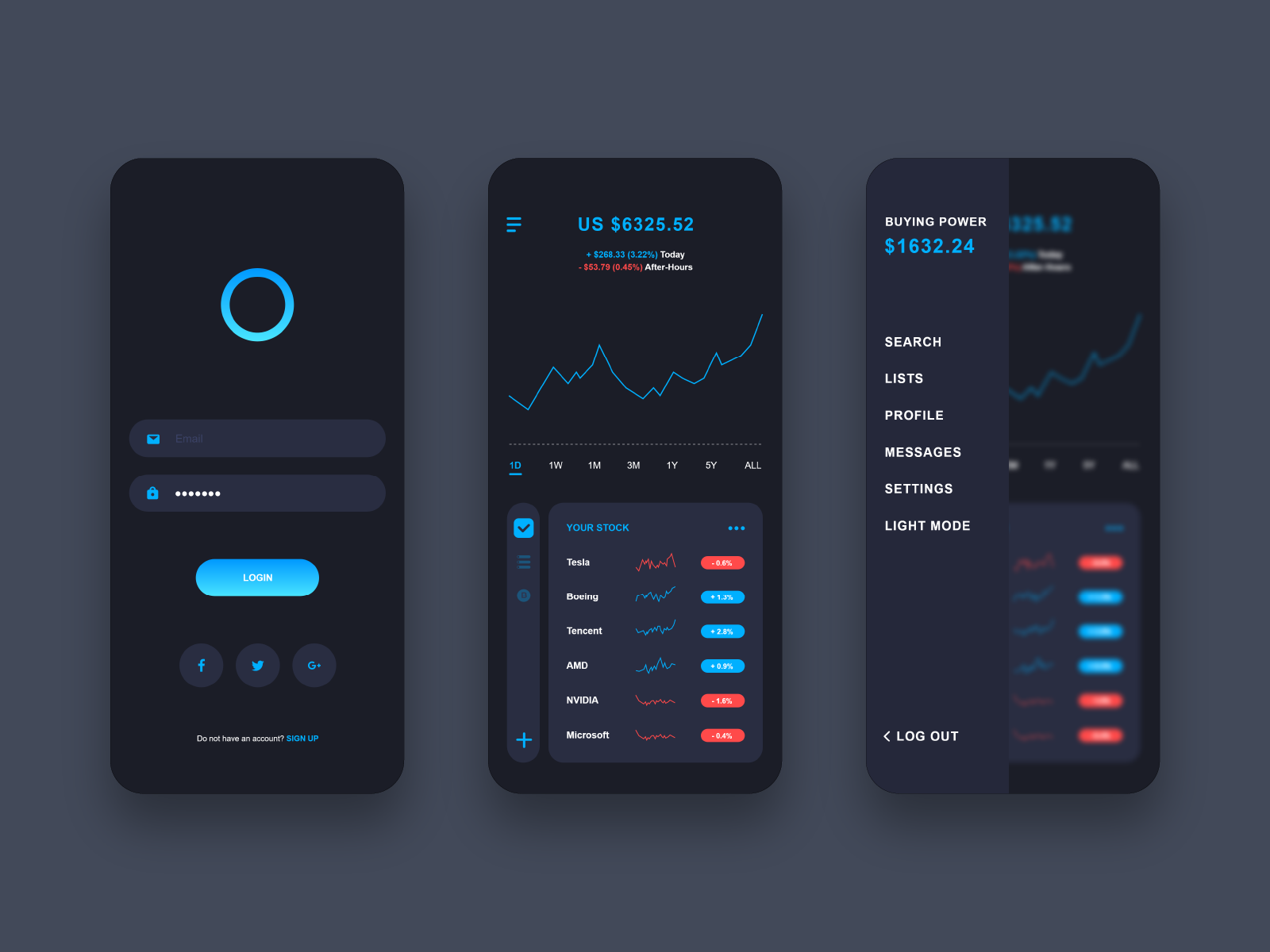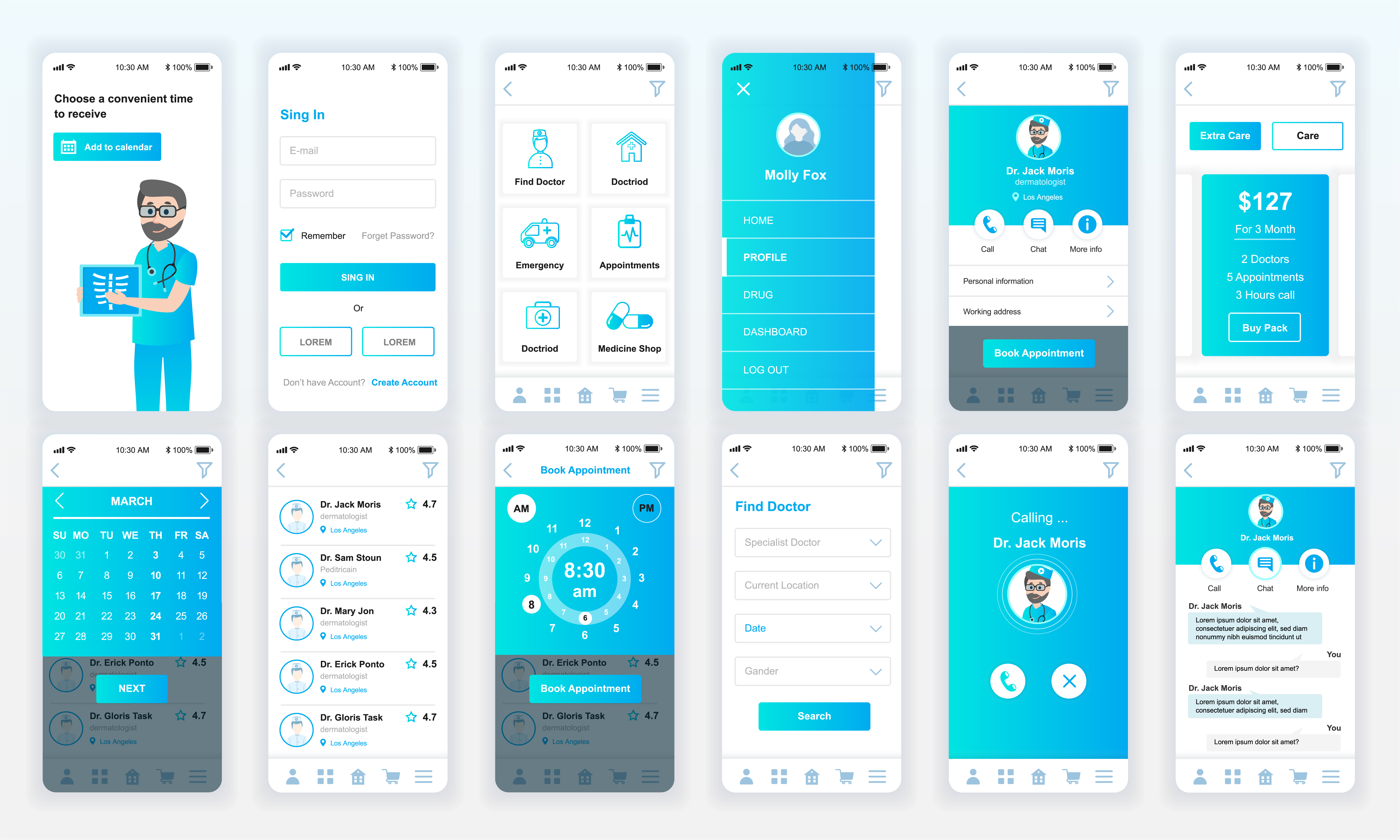

A balanced composition helps designers to create a specific mood to enhance the user experience. Emotion: Colors can evoke emotions and feelings in users.It makes the design intuitive and easier for users to navigate. Usability: Color is important to create a consistent visual language throughout the UI.Color harmony helps designers to ensure that the colors used in the UI align with the brand’s message. Branding: Color is a brand’s visual identity and messaging medium.Aesthetics: The UI is more attractive and engaging if there is a balanced composition of colors.This must be done in alignment with the overall aesthetics and brand image.Ĭolor harmony is important in UI designs for several reasons: To create a balanced and visually pleasing UI, systematically arranging colors is necessary.
UI DESIGN BLUE HOW TO
While the color theory is important to guide UI designers on how to mix colors appropriately, another aspect, color harmony, also has a significant role. Hence the application of color theory in design helps to create human designs that capture users’ attention. Newton considered colors as human perceptions rather than the qualities of light, like wavelength or frequency. For example, when Red, Green, and Blue are mixed, the outcome is white color. RGB is an additive color system where the colors become lighter after mixing them. A value between 0 and 255 is assigned to the web primary colors, where 0 is dark and 255 is bright. In digital designs, the RGB (Red, Green, Blue) color model is used to mix colors. The tertiary colors are magenta, vermilion, violet, teal, amber, and chartreuse. Tertiary colors are formed when a primary color is mixed with a secondary color.Secondary colors are formed by combining primary colors and orange, purple, and green make the three secondary colors.Red, blue, and yellow and the three primary colors.
 Primary colors are parent colors and they cannot be created by combining any other colors. The three basic categories of colors in a color wheel are primary, secondary, and tertiary colors. Over the years, the color wheel has gone through many transformations, magnifying the possibilities of new color combinations. The color wheel is used to accurately combine colors and understand how colors relate to each other. Modern color theory is based on Isaac Newton’s color wheel discovered in 1666. Newton’s color wheel: The Physics of Color Theory The foundational knowledge of this stems from learning about the color wheel. When creating UI UX designs, designers work extensively to identify the color palettes and different color combinations for each design that would work best for the target users. Human eyes can see more than 10 million colors and can effortlessly notice harmony and contrast in nature. Each of these colors may also have multiple meanings.Ī firm grasp of color theory is essential to crafting harmonious, meaningful designs for users. Different colors have different meanings, for instance, red is associated with power while blue evokes a feeling of trust, and green is used in relation to nature. It is the art of combining colors using the color wheel, wherein the best colors that convey the desired message are picked to make visually attractive interfaces. Visually attractive colors that impact users aesthetically and psychologically play a significant role in capturing user attention and imagination.Ĭolor theory is the framework that informs designers about the use of colors in the design. As the first interaction of the users with a product is visual, UI designers choose color as the main language for the initial communication. What is color theory?Ĭolor theory is a set of rules and guidelines used by designers to create appealing visual interfaces. This article explores the color theory and how colors can enhance the visual appeal and visual communication of designs. Color theory, whose roots date back to the 1600s, is used to create visually appealing designs that stand out. This proves the pivotal role of colors in the design and their impact on visual communication.Ĭhoosing the right colors for a UI/UX design requires an understanding of the formation of colors and how they interact with each other. Research reveals that users make a subconscious judgment of a product within 90 seconds of initial viewing and 62%-90% of the assessment is based on the color alone. In UI UX design, colors set the tone and elicit strong feelings in users.
Primary colors are parent colors and they cannot be created by combining any other colors. The three basic categories of colors in a color wheel are primary, secondary, and tertiary colors. Over the years, the color wheel has gone through many transformations, magnifying the possibilities of new color combinations. The color wheel is used to accurately combine colors and understand how colors relate to each other. Modern color theory is based on Isaac Newton’s color wheel discovered in 1666. Newton’s color wheel: The Physics of Color Theory The foundational knowledge of this stems from learning about the color wheel. When creating UI UX designs, designers work extensively to identify the color palettes and different color combinations for each design that would work best for the target users. Human eyes can see more than 10 million colors and can effortlessly notice harmony and contrast in nature. Each of these colors may also have multiple meanings.Ī firm grasp of color theory is essential to crafting harmonious, meaningful designs for users. Different colors have different meanings, for instance, red is associated with power while blue evokes a feeling of trust, and green is used in relation to nature. It is the art of combining colors using the color wheel, wherein the best colors that convey the desired message are picked to make visually attractive interfaces. Visually attractive colors that impact users aesthetically and psychologically play a significant role in capturing user attention and imagination.Ĭolor theory is the framework that informs designers about the use of colors in the design. As the first interaction of the users with a product is visual, UI designers choose color as the main language for the initial communication. What is color theory?Ĭolor theory is a set of rules and guidelines used by designers to create appealing visual interfaces. This article explores the color theory and how colors can enhance the visual appeal and visual communication of designs. Color theory, whose roots date back to the 1600s, is used to create visually appealing designs that stand out. This proves the pivotal role of colors in the design and their impact on visual communication.Ĭhoosing the right colors for a UI/UX design requires an understanding of the formation of colors and how they interact with each other. Research reveals that users make a subconscious judgment of a product within 90 seconds of initial viewing and 62%-90% of the assessment is based on the color alone. In UI UX design, colors set the tone and elicit strong feelings in users. 
From the vibrant hues of the rainbow to the calming shades of the serene ocean, color has the power to evoke emotions.







 0 kommentar(er)
0 kommentar(er)
